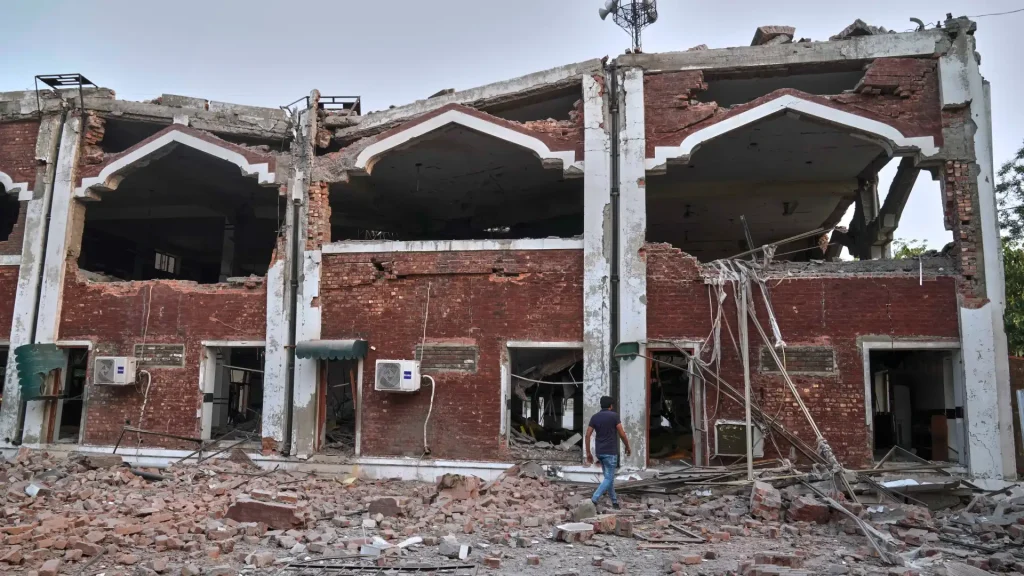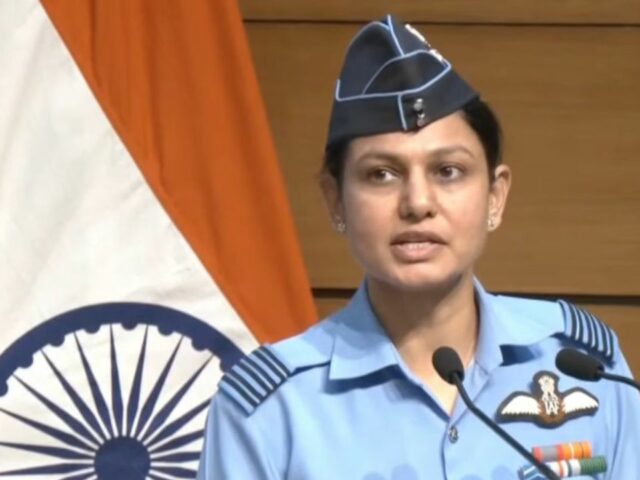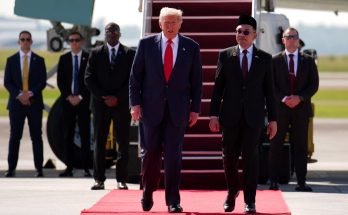
By Air Vice Marshal (Retd.) Anil Golani
The speed, lethality and precision with which the IAF responded during Operation Sindoor underscored the pivotal role of air power as a deterrent force as also for punitive action against an adversary. Looking ahead, while the IAF managed to achieve its objectives and was a major factor in Pakistan’s decision to call for a ceasefire, its operational and technological edge, along with its capacity and capability, needs to be continually enhanced to secure our skies, says Air Vice Marshal (Retd.) Anil Golani.
The heinous terror act on April 22, 2025, at Pahalgam that resulted in the killing of 26 innocent tourists based upon their religious identity, right in front of their families, brought India-Pakistan relations to an unforeseen new abyss. Intelligence reports pointed towards the Pakistan Army and the ISI once again, to either being in the know or abetting it with plausible deniability, like before.

The public sentiment in India and the political will this time around called for a befitting response that would not only send the message across loud and clear that an act of terror on the Indian soil would be treated as ‘war’ but also act as a deterrent for the future. The government swiftly got into action with Prime Minister Narendra Modi cutting short his visit to Saudi Arabia and announcing a slew of measures after the meeting of the Cabinet Committee on Security. The suspension of the Indus Water Treaty that had earlier survived conflicts, closing of the borders, suspension of trade, reduction of the diplomatic mission, including the expulsion of military advisors, and revoking visas of all Pakistan nationals in India were some of the measures that were announced swiftly. Diplomatic outreach across the world focused on India conveying its concerns unequivocally to the involvement of Pakistan in using terrorism as a state policy to create unrest in India.
Military Options
The military machinery got into action, planning and coordinating across the three services and the intelligence agencies to consider options that were then presented to the political establishment. Strategic signaling from the political establishment conveyed the country’s resolve to inflict punishment on a scale that had not been witnessed before. ‘Operation Sindoor’ was launched in the early hours of May 7. In a deliberate and carefully planned retaliation that was focused, measured and non-escalatory, the Indian Armed Forces struck nine terrorist training camps, indoctrination centres and staging areas inside Pakistan and Pakistan Occupied Kashmir. These were targeted based on credible intelligence, ensuring no loss to civilian lives and property, and no military targets were struck. Coordinated and executed with precision, these attacks executed by the IAF in synergy with the Indian Army, resulted in substantive physical damage to the Headquarters of Jaish-e- Mohammed (JeM) in Bahawalpur and Lashkar-e-Taiba (LeT) in Muridke. The casualties suffered and the psychological impact of these attacks was unparalleled.
 Pakistan was bound to retaliate, as not reacting to the Indian attack would only have undermined the credibility and sanctity of Pakistan’s military establishment whose raison d’etre is keeping the threat from India alive. Responding with drone and missile attacks, targeting Indian cities and airfields indiscriminately from Jammu and Kashmir to Kutch, the attacks were repulsed by an integrated and impregnable air defence system of the IAF. In response, the IAF systematically targeted the air defence network of Pakistan from Lahore to Karachi and struck thirteen targets from Sargodha to Nur Khan (Chaklala) Jacobabad, Skardu, Bholari, Sukkur, Rafiqui, Murid, Pasrur and Sialkot with devastating effect. Pakistan was forced to call for a ceasefire on the morning of May 10, which it did through the DGMO channel, even as the United States claimed credit for brokering it between India and Pakistan. India’s position was clear that any further shelling or attacks across the border would be met with a punitive response. Truce has prevailed since then and only time will tell what lies ahead in the future.
Pakistan was bound to retaliate, as not reacting to the Indian attack would only have undermined the credibility and sanctity of Pakistan’s military establishment whose raison d’etre is keeping the threat from India alive. Responding with drone and missile attacks, targeting Indian cities and airfields indiscriminately from Jammu and Kashmir to Kutch, the attacks were repulsed by an integrated and impregnable air defence system of the IAF. In response, the IAF systematically targeted the air defence network of Pakistan from Lahore to Karachi and struck thirteen targets from Sargodha to Nur Khan (Chaklala) Jacobabad, Skardu, Bholari, Sukkur, Rafiqui, Murid, Pasrur and Sialkot with devastating effect. Pakistan was forced to call for a ceasefire on the morning of May 10, which it did through the DGMO channel, even as the United States claimed credit for brokering it between India and Pakistan. India’s position was clear that any further shelling or attacks across the border would be met with a punitive response. Truce has prevailed since then and only time will tell what lies ahead in the future.
Lessons for the future
Weeks after Operation Sindoor, a few lessons have emerged that need to be taken cognisance of to secure India’s rise to a ‘Viksit Bharat’ by 2047. This was a short and intense conflict wherein the Indian Air Force played a pivotal and leading role by striking at targets deep inside Pakistan. These targets were struck with precision, simultaneously across the country in a focused and calibrated manner avoiding collateral damage.

The calibration of the conflict across the escalation ladder was controlled by air power that commenced and ended the conflict on its own terms, having achieved the military objectives. The impregnable air defence facilitated by integrating the Akashteer of the Indian Army with the Integrated Air Command and Control System (IACCS) of the IAF ensured that the threat from Pakistan from missiles and drones was warded off with minimal damage to Indian infrastructure and military installations. Centralised planning of the entire operation under the aegis of the Chief of Defence Staff (CDS) with decentralised execution by the Service HQs worked flawlessly to ensure optimal utilisation of resources. The synergy between the intelligence agencies, armed forces and the national security establishment, including the Ministries of Defence, Home and External Affairs was evident as Operation Sindoor unfolded. The political direction and resolve at the highest level ensured this.
Indigenous weapon systems like the India-Russia co-produced Brahmos cruise missiles, Akash surface-to-air missiles and loitering munitions and drones performed to deliver the required results. This also was the first conflict where manned aircraft from either side did not cross the international border or the Line of Control using stand-off weapons to attack targets on the ground and using Beyond Visual Range (BVR) missiles for air-to-air combat. Air-to-air combat of this scale and magnitude where more than 100 aircraft were airborne simultaneously, using BVR Air-to-Air Missiles (AAM) has not been witnessed in modern warfare.
The indigenously designed and developed IACCS integrated with sensors and weapon systems of the other services reposed the trust placed in the hands of the IAF for ensuring the air defence of sovereign Indian airspace. Robust multi-layered air defence is essential, but innovative and indigenous solutions are required for anti-drone measures. Satellite imagery provided by Indian satellites gave the requisite intelligence and battle damage assessment as irrefutable proof of the damage inflicted on targets in Pakistan.
Why Air Power Matters
The role of air power as a deterrent force as also for punitive action against an adversary is paramount. The speed, lethality and precision with which the IAF responded and continued to act clearly demonstrated the primacy of this instrument of military power in the given scenario and the political objectives desired. The lack of adequate Air-to-Air Refuelling (AAR) and Airborne Early Warning and Control (AEW&C) aircraft along with the absence of secure and encrypted communication in the form of Software Designed Radios (SDR) and an Operational Data Link (ODL) have been known for long. These are mandatory requirements in the current aerial warfare domain and there is an urgent and immediate need to fill these gaps through fast-track acquisition or indigenous production, at the earliest. With an increasing use of UAVs for all roles including terminal attack, these need to be produced by the domestic industry to keep pace with the nation’s growing requirements. Long range glide bombs and other weapon systems also need to be produced and stocked in sufficient quantities to meet the requirements of the armed forces.
Tacit support provided by China and Turkey to Pakistan as the skirmish raged was the new normal that India will have to contend with. Apart from words of restraint and fears of the conflict escalating into the nuclear domain from friendly foreign countries there was little else that India received along with platitudes on the fight against terrorism. This is the price that India would continue to pay for its policy of strategic autonomy and therefore the importance of self-sufficiency and Atmanirbharta or self-reliance in military capability and capacity cannot be undermined.
Air forces are pivotal to Multi Domain Operations (MDO) being the only force capable of having cross-domain coercion and deterrence capabilities that make it an inescapable necessity for the future. While the IAF managed to achieve its objectives and was a major factor in Pakistan’s decision to call for a cease fire, its operational and technological edge along with its capacity and capability needs to be continually enhanced to secure our skies.
(Air Vice Marshal (Retd) Anil Golani is Director, Centre for Air Power Studies (CAPS). A Qualified Flying Instructor, he is one of the few to have served in senior ranks in both the Joint Services Commands of the country, Andaman & Nicobar Command as the Air Force Component Commander and Strategic Forces Command as the Chief Staff Officer (Air Vector). The other joint services appointments include Air Officer Commanding Maritime Air Operations in Mumbai and Chief Instructor, Air Force, at Defence Services Staff College, Wellington. He has done the Staff Course, Higher Air Command Course and a year’s course in International Security & Strategy at the Royal College of Defence Studies, London.)
(This article has been published in the latest edition of India and the World magazine.)
Anil Golani (1)Author Profile
- India Writes Network (www.indiawrites.org) is an emerging think tank and a media-publishing company focused on international affairs & the India Story. Centre for Global India Insights is the research arm of India Writes Network. To subscribe to India and the World, write to editor@indiawrites.org. A venture of TGII Media Private Limited, a leading media, publishing and consultancy company, IWN has carved a niche for balanced and exhaustive reporting and analysis of international affairs. Eminent personalities, politicians, diplomats, authors, strategy gurus and news-makers have contributed to India Writes Network, as also “India and the World,” a magazine focused on global affairs.
Latest entries
 India and the WorldNovember 26, 2025G20@20: Africa’s Moment – The Once and Future World Order
India and the WorldNovember 26, 2025G20@20: Africa’s Moment – The Once and Future World Order DiplomacyOctober 4, 2025UNGA Resolution 2758 Must Not Be Distorted, One-China Principle Brooks No Challenge
DiplomacyOctober 4, 2025UNGA Resolution 2758 Must Not Be Distorted, One-China Principle Brooks No Challenge India and the WorldJuly 26, 2025MPs, diplomats laud Operation Sindoor, call for national unity to combat Pakistan-sponsored terror
India and the WorldJuly 26, 2025MPs, diplomats laud Operation Sindoor, call for national unity to combat Pakistan-sponsored terror India and the WorldJuly 25, 2025When Fire Ends, Diplomacy Begins
India and the WorldJuly 25, 2025When Fire Ends, Diplomacy Begins







